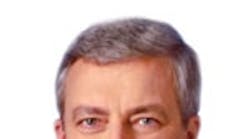In the past five years, Ingersoll-Rand Co. Ltd. has undergone a transformation. The company, incorporated in Bermuda, divested some $3.3 billion in asset-intensive businesses that operated in industries the company described as very vulnerable to economic cycles, such as mining, and invested in some 50 new businesses characterized by higher growth potential and strong brand names. Ingersoll-Rand businesses include names such as Schlage locks, Bobcat and Club Car. Herbert L. Henkel, president, CEO and chairman, has led the transformation.
IW: Where are you in your transformation strategy?
Henkel: The culmination of our transformation strategy was basically completed in 2004 and, fittingly, it was completed with the sale of our drilling solutions business, which was the origin of the company more than 130 years ago. We are now a highly diverse business in terms of brands, markets and global presence. I think the very heavy lifting is done. What we continue to do is look at some of the product lines we're in, both globally and from an asset-intensive basis.
IW: Have you largely exited the cyclical industries?
The Ingersoll-Rand of old was geographically so focused on North America that it did not have the potential to go and pull itself through those downturns with significant strength in both Europe and/or Asia Pacific. More importantly, most of the businesses we were in were large, durable capital-investment-type products that customers would have to acquire, and during slowdowns in economic conditions everyone tries to not make capital investments. . . .
In the industrial space that we participate in, I cannot think of one industry that doesn't have a cycle of some sort. It may be geographic, it may be by specific product category, it may be by end-serve market. . . .[In] security, there's a residential cycle, there's a commercial cycle, there's a nonres cycle, there's a North American cycle, there's a European one as well as an Asian one. If you can participate in enough of these, you'll wind up having more consistency rather than individual spikes.
IW: At a recent investment conference, you described Ingersoll-Rand as a leading diversified business that generates consistent financial performance. Is the investment community receiving this message?
Henkel: A diversified industrial company is measured on Wall Street as a price/earnings multiple that ranges from about 15 to 20, while highly cyclical companies have a much lower p/e. Currently [Ingersoll-Rand's] p/e is about 13, so that means we are about halfway between the cyclical companies that are down at the 10 level . . . but not yet at the 15 to 20 [level]. . . . I think at this point in time we're still viewed as a company in transition that has to demonstrate it can work its way through a cycle without having a deep cyclical reduction in earnings.
We need to convince them that we have in place all of the attributes which will result in a favorable, even in a downturn, economic performance. . . . [In the past] it was not only that we were cyclical, it was that our rate of growth was at GDP-or-less-type numbers in the 1990s. Right now we say that we have a long-term growth target of 4% to 6% annually from organic revenues, another 4% to 6% from acquired businesses. So collectively we're targeting 8% to 12%.



